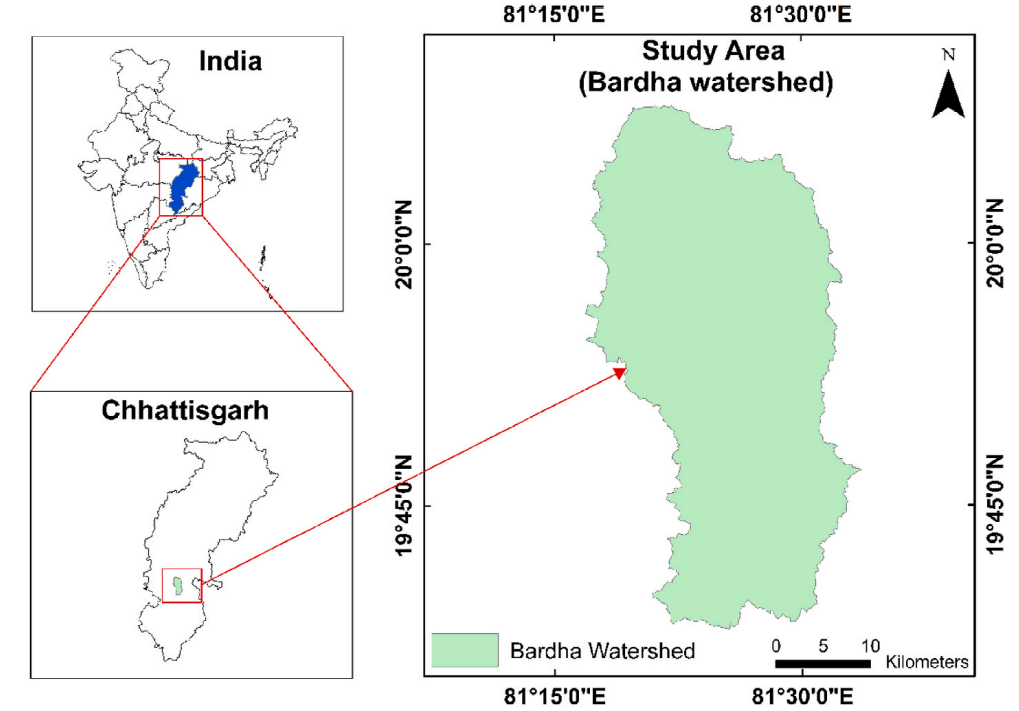Hydrology is the study of water movement and its interactions with Earth’s terrain, highlighting water’s significance as a vital natural resource for social and economic growth. Rainfall significantly influences runoff, which in turn impacts water resource management strategies, such as agricultural irrigation and urban water distribution. Research aims to forecast rainfall and explore its relationship with runoff to enhance water resource management. Runoff plays a crucial role in various areas, including resource assessment, flood risk management, and predictive modelling. However, the challenge of modelling rainfall into the runoff is compounded by its complex, nonlinear characteristics, necessitating collaboration among hydrologists, agricultural experts, and engineers.
Artificial Intelligence technologies, including XGBoost, Support Vector Regression (SVR), and Convolutional Neural Networks (CNNs), are increasingly used for streamflow prediction. CNNs are particularly adept at recognizing intricate patterns and can be utilized with time series data, making them suitable for rainfall and runoff analysis. A hybrid architecture called CNN-RNN combines the spatial feature detection of CNNs with the sequential modelling strengths of Recurrent Neural Networks (RNNs), improving predictions across various fields, such as finance, healthcare, and industrial monitoring. The application of AI in hydrology is on the rise, indicating a growing commitment to enhancing river flow forecasting.
A study published in Artificial Intelligence in Geosciences (2024) introduces five models: ANN, KNN, RF, XGBoost, CNN, and Convolutional Recurrent Neural Network (CNN-RNN) to simulate rainfall-runoff dynamics in the Bardha Watershed of India. Located in the Chhattisgarh state, the Bardha basin spans an area of 1024 km².

The Artificial Neural Network (ANN) adeptly identifies intricate nonlinear relationships in data, making it well-suited for a variety of rainfall-runoff factors. At the same time, the K-Nearest Neighbors (KNN) algorithm forecasts runoff by evaluating the similarities among neighboring data points, enabling it to adjust to local fluctuations. Random Forest (RF) improves predictive accuracy by integrating the outcomes of several decision trees, which is especially beneficial in complex scenarios. XGBoost uses a sequential method for building trees, enhancing predictions and managing complex data dependencies. The Convolutional Neural Network (CNN) excels at recognizing intricate patterns, particularly in time series data linked to rainfall and runoff. Finally, the hybrid model of CNN-RNN combines CNNs for capturing spatial features with Recurrent Neural Networks (RNNs) to address sequential dependencies, making it ideal for analyzing both local patterns and long-term trends in rainfall-runoff modelling.
The analysis conducted from 2003 to 2009 utilized parameters like rainfall, minimum, and maximum temperatures to assess discharge. Prior to the analysis, each algorithm was fine-tuned for optimal performance: the Artificial Neural Network (ANN) employed a ReLU activation function, a batch size of 4, and was run for 1000 epochs; the K-Nearest Neighbors (KNN) algorithm was set to consider 6 neighbors; the Random Forest (RF) model used 100 estimators; and the XGBoost algorithm featured a learning rate of 0.1 with a depth of 5. For Convolutional Neural Networks (CNN), the activation function was ReLU, accompanied by a uniform kernel initializer and a learning rate of 0.01. The CNN-RNN hybrid model combined ReLU and sigmoid activation functions, used a uniform kernel initializer, had a learning rate of 0.01, and included 32 neurons. To spatialize rainfall data, the team utilized Geographic Information System (GIS) tools to define the watershed and applied the Thiessen Polygon method. The data was normalized and split into training and testing sets, enabling the models to learn from historical trends and accurately predict future flow rates.
The study’s results indicate that the CNN-RNN and XGBoost models achieved the highest R² value of 0.99 during the training phase, whereas the KNN model exhibited the lowest value at 0.87. In the testing phase, the CNN-RNN model again demonstrated the strongest R² performance at 0.97, while the RF model recorded the lowest value at 0.86. Additionally, during training, the CNN-RNN model achieved the highest Nash-Sutcliffe Efficiency (NSE) of 0.99, in contrast to the KNN model, which had the lowest NSE of 0.87. The NSE is used to evaluate the predictive accuracy of hydrological models by comparing simulated values to observed data. During testing, the CNN-RNN model maintained the highest NSE at 0.97, while both the ANN and RF models reported the lowest NSE at 0.86.
Integrating AI models such as CNN-RNN into rainfall-runoff simulations transforms water resource management. Utilizing deep learning methods allows for exceptionally accurate runoff predictions, enhancing flood control, irrigation planning, and environmental sustainability. As AI advances, its influence in hydrological research will broaden, providing increasingly precise and effective solutions for real-world issues.
Reference
Shekar, P. R., Mathew, A., Yeswanth, P. V., & Deivalakshmi, S. (2024). A combined deep CNN-RNN network for rainfall-runoff modelling in Bardha Watershed, India. Artificial Intelligence in Geosciences, 5, 100073.https://doi.org/10.1016/j.ecolind.2015.08.036
Abrahart, R. J., & See, L. (2000). Comparing neural network and autoregressive moving average techniques for the provision of continuous river flow forecasts in two contrasting catchments. Hydrological processes, 14(11‐12), 2157-2172.
Kratzert, F., Klotz, D., Brenner, C., Schulz, K., & Herrnegger, M. (2018). Rainfall–runoff modelling using long short-term memory (LSTM) networks. Hydrology and Earth System Sciences, 22(11), 6005-6022.
Lü, H., Hou, T., Horton, R., Zhu, Y., Chen, X., Jia, Y., … & Fu, X. (2013). The streamflow estimation using the Xinanjiang rainfall runoff model and dual state-parameter estimation method. Journal of Hydrology, 480, 102-114.

